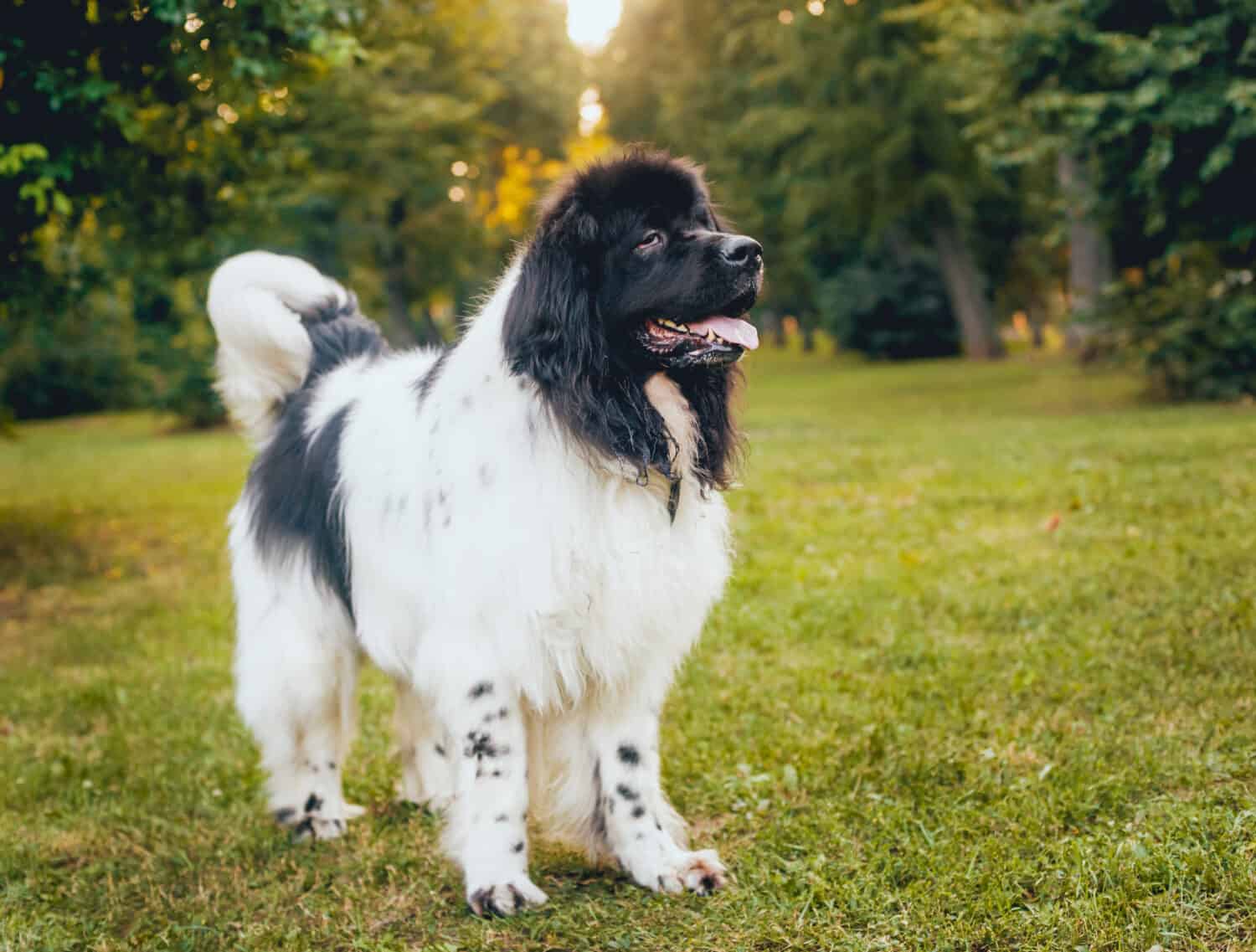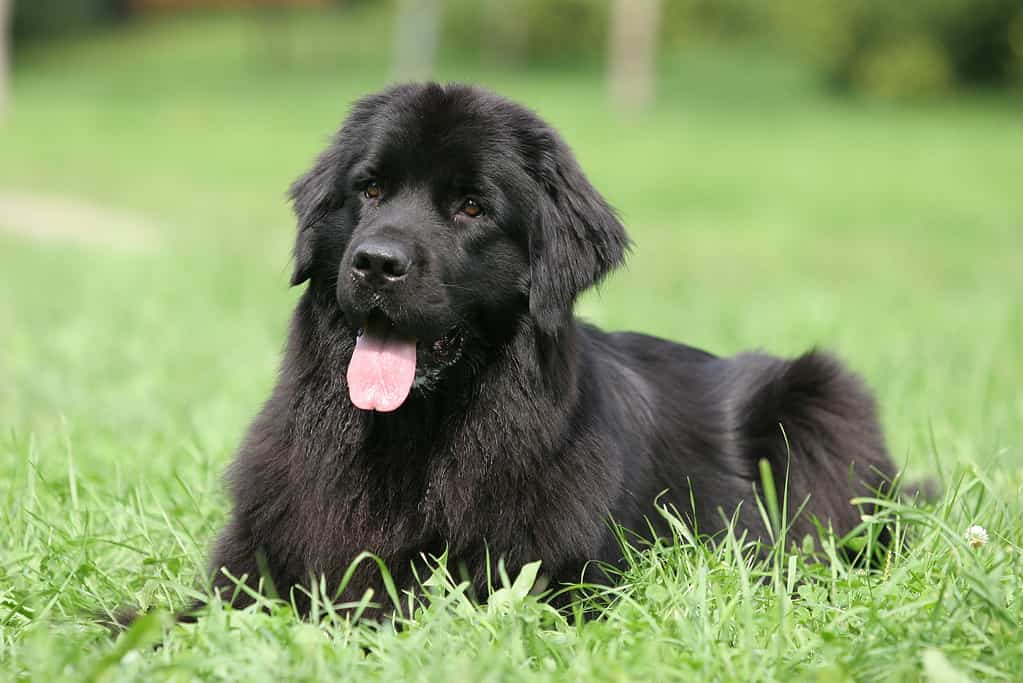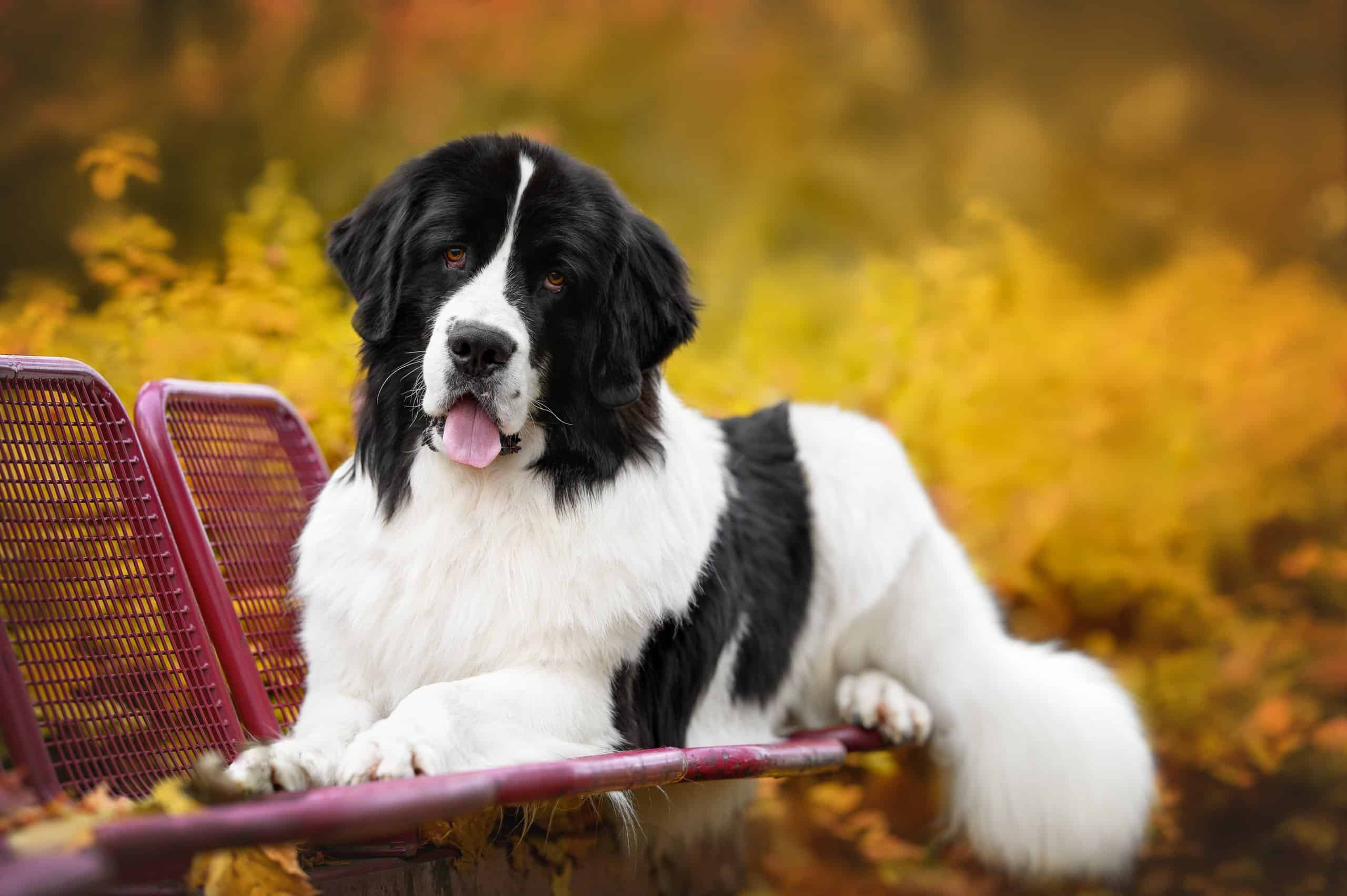If you’re welcoming a Newfie into your home, you may be wondering which colors are considered standard for this breed, especially if you plan on entering your dog into competitions. We’ll unpack the four standard Newfoundland colors in this article, but also mention some common variations.
Keep in mind that all of them are equally beautiful, so don’t let breed standards dictate your choice of furry friend.
Standard Newfoundland Colors
According to the American Kennel Club (AKC), Newfoundlands come in four standard color variations:
- Gray
- Brown
- Black
- White and black
The Newfoundland Club of America (NCA) and the United Kennel Club (UKC) list the same acceptable colors on their website.
However, the AKC also notes that beige, black and tan, and white and brown variations are also acceptable — although they are not considered standard.
#1: White and Black Newfoundland

White and black Newfoundlands have a very interesting coat and look adorably fluffy.
©Roman Zaiets/Shutterstock.com
- The rarest
White and black Newfoundlands are also known as Landseers. They are probably the rarest out of the four standard variations.
You’ll recognize them by their white base coat with black markings. Usually, their head will be a solid black, but may sometimes have white on the muzzle. The saddle and the rump (rear end) are typically black, while the tail is white.
Note that black Newfoundlands can also have white markings, so people sometimes mix them up with Landseers. However, in Blacks, the white markings will appear on other places of a dog’s body, namely the chin, chest, toes, and tip of the tail. So, to differentiate between Landseers and Blacks, pay attention to where the white patches are placed!
#2: Gray Newfoundland

Gray Newfoundlands can often have lighter-colored eyes.
©JStaley401/ via Getty Images
- Semi-rare
Gray Newfoundlands are typically considered the second rarest variation, but some sources also consider them to be the rarest. In either case, you can usually expect to find them only with professional breeders — not, for example, in animal shelters.
Although most Newfoundlands have dark brown colors, Grays can have lighter eyes. This is considered normal.
Just like black Newfoundlands, Grays can also sometimes have white markings on the chin, chest, toes, or tip of the tail. According to the UKC, they may also have a tinge of bronze or lighter furnishings on the otherwise gray coat. All of these variations are considered acceptable and standard.
#3: Brown Newfoundland

Browns are sometimes mixed up with Grays, especially if they have a lighter brown coat.
©DejaVu Designs/ via Getty Images
- Semi-common
Brown Newfoundlands are considered semi-common. They share many features with the Grays: they can have lighter eyes and lighter furnishings on a brown coat.
As with other solid color variations, Browns may also have some white markings on the chin, chest, toes, or tip of the tail. However, their most recognizable trait is a rich chestnut coat color that definitely sets them apart from other variations.
#4: Black Newfoundland

Black Newfoundlands are the most common and the easiest to recognize.
©Dixi_/ via Getty Images
- The most common
Black Newfoundlands are the most common. They usually have dark brown eyes and striking black coats. However, they may also have some white or bronze markings.
As mentioned, in order to distinguish between Blacks with white markings and “real” Landseers, you should consider the location of the white patches or spots.
Other Newfoundland Variations
Other variations include beige, black and tan, and white and brown Newfoundlands. These are not in the breed standard, but that doesn’t take away from their beauty!
Beige Newfoundlands
Beige Newfoundlands can look very similar to Browns but are typically lighter in shade. They may also have lighter-colored eyes.
Black and Tan Newfoundlands
Black and tan Newfoundlands can resemble Blacks, especially since black Newfoundlands can also have bronze markings. However, unlike Blacks, this variation will typically have tan fur on their face, chest, legs, and tail.
White and Brown Newfoundlands

White and brown Newfoundlands are quite common, but this variation isn’t recognized as the standard.
©ABphotopro/Shutterstock.com
The last non-standard variation mentioned by the AKC includes white and brown Newfies. They’ll typically have a brown base coat with white patches of fur. Sometimes, vice versa is also possible.
FAQ
Can Newfoundlands be spotted?
Yes, Newfoundlands can be spotted. The most typical variation includes a white coat with black spots.
What about Irish spotted Newfoundlands?
Irish spotted Newfoundland” is actually a special term used to refer to black Newfoundlands with white markings. In other words, this is not a separate, distinct variation of Newfies.
How long do Newfoundland dogs live?
The average Newfoundland lifespan is between nine and 10 years. However, in rare cases, Newfoundlands can also live up to 15 years.
Ready to discover the top 10 cutest dog breeds in the entire world?
How about the fastest dogs, the largest dogs and those that are -- quite frankly -- just the kindest dogs on the planet? Each day, AZ Animals sends out lists just like this to our thousands of email subscribers. And the best part? It's FREE. Join today by entering your email below.
Thank you for reading! Have some feedback for us? Contact the AZ Animals editorial team.








